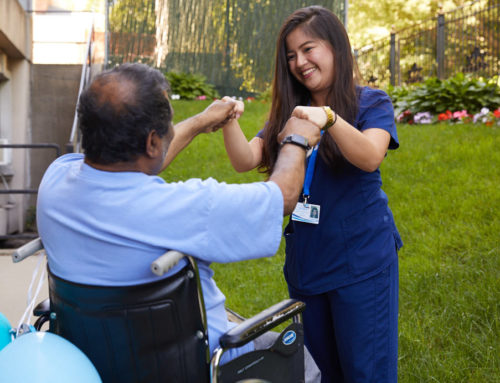Brisk Walking Benefits: Who It Helps and Why
Walking is a fantastic exercise that works your entire body. It’s easy, requires no equipment, and almost anyone can do it. Though frequent leisurely strolls keep you active, brisk walking has more benefits than you may realize.
Of course, not everyone can manage a fast pace. Those with medical conditions may have limitations preventing quick movement. It’s recommended to seek medical advice before taking on new exercises and physical activities and start slowly to avoid injury. For more information on the value of walking, check out the following sections.

Brisk Walking Benefits
Brisk walking for 10 minutes daily in mid-life offers significant health benefits, including improved physical fitness, mood, and a reduced risk of early death by 15%. It helps manage chronic conditions, supports weight management, and enhances cardiovascular health.
Walking is an accessible, equipment-free activity that can move inactive individuals toward meeting the UK Chief Medical Officers’ recommendation of 150 minutes of moderate exercise weekly. If just 10% of inactive adults adopted this habit, it could prevent 251 deaths annually.
The most important benefit of brisk walking is improved heart health. For a healthy lifestyle, experts recommend 150 minutes of moderate-intensity activity each week.
Though you can try biking, tennis, or water aerobics, these activities require equipment or special venues. Brisk walking is also considered moderate-intensity, and unlike the others, it can be done anywhere with no specialized gear.
One well-known benefit of brisk walking is weight loss. An inactive lifestyle and poor diet cause an increase in visceral fat. Excessive amounts may cause heart disease, stroke, diabetes, or other dangerous health conditions. Luckily, moderate-intensity activities like fast walking reduce these fatty deposits and improve your health.
Physical activity also improves respiratory functions. Studies show that brisk walking reduces the risk of respiratory disease by 34% when compared to slow walkers. The chances of developing chronic obstructive pulmonary disease also lowered by 65% in men and 72% in women.
The main benefit of brisk walking is the prevention of cardiovascular disease. Those with a faster pace were 31% less likely to develop CVD – cardiovascular disease. Men had 24%, and women had 21%, reduced risk of CVD mortality compared to slow walkers. Strokes were also less likely in 44% of those in the fast-walking category.
Does walking have to be fast to be beneficial?
Experts state that all types of movement have advantages for your health. If you aren’t already active, even slow walking is better than nothing. It works the muscles and causes slight increases in your heart rate.
Of course, brisk walking offers more benefits than strolling through the park. The faster you move, the higher your heart rate. Circulation improves, blood sugar and cholesterol drop, and you burn more calories.
But don’t push yourself too hard, especially if you’re just starting out. Take your time and work up to longer intervals to avoid injury. Taking measures to protect yourself is also vital. Get your vision and hearing checked, avoid unbroken surfaces, stay focused, and walk in safe areas with others when possible.
Who is it best for?
Brisk walking is an excellent activity with health benefits for everyone. However, some evidence shows those benefits are greater for those with existing health conditions. Exercise helps manage their condition and its symptoms. The risk of developing comorbidities also lessens with only 10 minutes of brisk walking each day.
Mid-life adults also benefit significantly from adding fast-paced walks to their routine. As we age, the heart rate doesn’t increase as much during physical activity. The risk of high blood pressure, poor circulation, and cardiovascular issues increases. Brisk walking can counter these issues when done regularly.
Resources:
- CDC, What Counts as Physical Activity for Adults
https://www.cdc.gov/physical-activity-basics/adding-adults/what-counts.html - PubMed, May 2021, Effect of exercise intervention dosage on reducing visceral adipose tissue
https://pubmed.ncbi.nlm.nih.gov/33558643/ - PubMed Central, July 2023, The multifaceted benefits to walking for healthy aging: from blue zones to molecular mechanisms
https://pmc.ncbi.nlm.nih.gov/articles/PMC10643563/#:~:text=Compared%20to%20slow%20pace%20walkers,%25%20and%2072%25%2C%20respectively - American Heart Association, American Heart Association Recommendations for Physical Activity in Adults and Kids
https://www.heart.org/en/healthy-living/fitness/fitness-basics/aha-recs-for-physical-activity-in-adults - Harvard Health Publishing, March 8, 2016, Danger-proof your walking routine
https://www.health.harvard.edu/staying-healthy/danger-proof-your-walking-routine - Public Health England, 10 minutes brisk walking each day in mid-life for health benefits towards achieving physical activity recommendations
https://assets.publishing.service.gov.uk/government/uploads/system/uploads/attachment_data/file/639030/Health_benefits_of_10_mins_brisk_walking_evidence_summary.pdf
This article is for educational and informational purpose only and does not substitute for professional medical advice. For any questions about your own health condition, speak to a qualified physician or healthcare provider.







Leave A Comment